Today you’ll find some “little” survival tricks popular in the early 1900’s.
100 years ago Gallaher Ltd printed a short “How-To” series, with clever hints for emergency situations. The cards were distributed with packs of cigarettes. All the pictures bellow are part of the George Arents Collection, The New York Public Library.
This is the second part the article.
If you want to read the first part go to “25 Lost Survival Tips from 100 Years Ago – with Illustrations.”
26. How to Adapt Noisy Boots for Stealth Walking
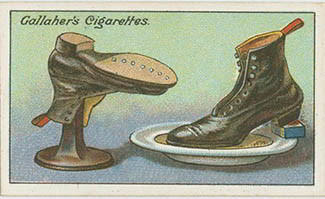 We all have a pair of boots that squeaks every time we take a step. This makes it impossible to walk undetected. Here is a great, easy fix as it war written 100 years ago on the back of this card (image)
We all have a pair of boots that squeaks every time we take a step. This makes it impossible to walk undetected. Here is a great, easy fix as it war written 100 years ago on the back of this card (image)
“When boots make a squeaking noise, a good remedy is to drive several brads into the center of the sole. Another method is to place the sole in a dish or a plate containing oil with the heel propped up in order to immerse the whole of the sole and the boot left until the oil has thoroughly soaked into the leather.”
27. How to Make a Spirit Level
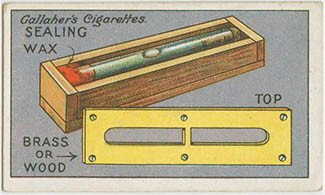 You can’t call yourself a builder or a woodworker if you don’t have a level.
You can’t call yourself a builder or a woodworker if you don’t have a level.
100 years ago people used to build their own, and it might be simpler than you ever thought. You will need a glass tube, corked at each end, filled with water or spirit with just enough to leave a bubble of air.
The ends of the tube are fixed in the box using sealing wax, which should cover them to prevent any loss of liquid by evaporation. Here are another 31 Cool DIY Projects for Preppers.
28. How to Make Briquettes from Coal
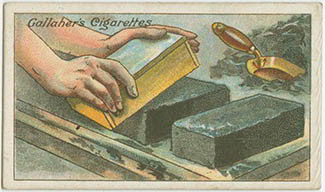 This is an economical way to treat coal dust and to make it into bricks of fuel.
This is an economical way to treat coal dust and to make it into bricks of fuel.
Mix the dust with salt (about a handful of salt to each shovelful of coal dust), add water, and stir it until you get a stiff paste. You could also use wallpaper paste instead of salt. Mix a quantity of the paste sufficiently to fully dampen the amount of coal dust. Mix thoroughly to achieve a thick consistency.
Mold the bricks in an old tin box, and afterwards, place them on a board or a shelf to dry. You can also use plastic plant pots. Don’t forget to press them into the box firmly.
Damp coal will burn, but it’s still best to wait a couple of days. You will get a much better result if you wait until they are fully dried. Afterwards, just place them on the fire.
Related: How to Make Firebricks (fire logs) and Wood Stove Logs for Free!
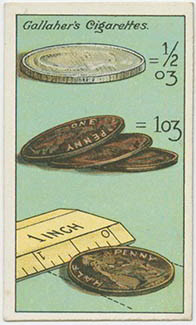 29. How to Measure with Coins
29. How to Measure with Coins
Here are the instructions written on the back of the card: “It is sometimes useful to know that half-a-crown equals half an ounce in weight, and three pennies weigh one ounce. A half-penny measures one inch in diameter; half-crown an inch and a quarter and a sixpence three-quarters of an inch in diameter.”
As coins have changed sizes and dimensions over the years, it’s good to know that 5 pennies half will add to half an ounce in weight, and 5 quarters will make an ounce. A penny measures 0.75 inches in diameter and a quarter is just under an inch at .955 inches.
30. How to Kill a Tree Stump
Instructions: “If a tree stump is not removed from the ground, it often starts sprouting, and strong undergrowth results. To prevent this, holes should be bored in the top of stump and a patch of bark cut from the side and more holes bored there. A mixture of solignum and salt filled into these holes will soak through the tree stump and kill it.”
If either Epsom or rock salt are used, there is no need for solignum. Light a candle and put some wax over the holes so the salt won’t fall out. Cover the stump with a plastic tarp, a trash bag, or another nonporous item. The stump will die faster without sunlight and water. It will take between six weeks and several months for the stump to die, but afterwards, it will begin to fall apart on its own.
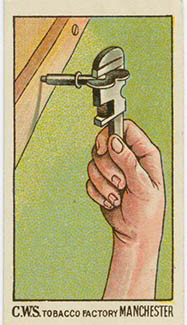
31. How to Repair a Faulty Screw
Sometimes as the screw is almost in place, the head breaks away, leaving no grip for the screwdriver.
Grate the stem of the screw square, and fit it into a clock key.
A cycle spanner can then be used to withdraw the screw, as shown in the illustration. This is a good method as it will not damage the wood.
32. How to Make Corks Fit
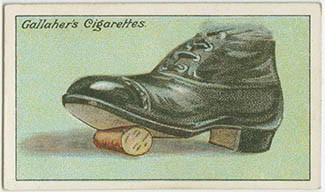 If you have a cork that is slightly too large for a bottle, here is a quick fix.
If you have a cork that is slightly too large for a bottle, here is a quick fix.
Do not trim down the cork with a knife; a better method is shown in the picture. Roll the cork under your shoe, exerting a steady pressure. This will reduce the size of the cork without ruining the smooth surface.
33. How to Fix a Burst Pipe
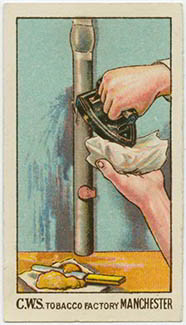 This is a temporary fix. Here are the instructions:
This is a temporary fix. Here are the instructions:
“First cut off the water supply; then empty the pipe and dry thoroughly. Use a hot iron to close the burst, and remove any moisture.
Prepare a cement of one part shellac to three parts methylated spirit, stirring till it becomes a thick paste.
Spread this on a long piece of canvas that is wide enough to cover the break in the pipe; afterwards, put the paste on the opening, and bind around the pipe and secure it with string. Thin down the remainder of the paste with spirit, and soak it into canvas.”
Let it dry before you turn on the water again.
34. 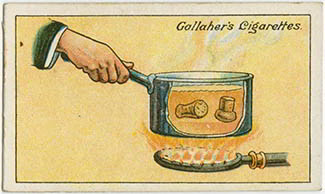 How to Make Corks Watertight
How to Make Corks Watertight
Put a couple of ounces or more of paraffin wax in a pot. When it’s boiling, immerse the corks completely in the wax.
This will make them not only watertight but airtight as well.
Related: H2O Dynamo – The Awesome DIY Device That Turns Air Into Fresh Water! (Video)
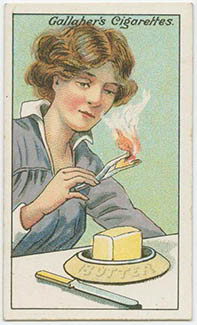 35. How to Test Butter
35. How to Test Butter
This is still a good way to test if commercial butter is butter or margarine.
Rub a little of the suspected compound on a piece of paper, and set the paper on fire.
If it is pure butter, the odor will be light and agreeable, while the presence of margarine is made known by an unpleasant, tallow-like smell.
If you want to be sure, it’s better to make your own butter; it’s really easy, healthy, and actually pretty fun.
36. How to Preserve Paint Brushes
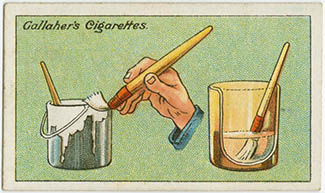 After you finish painting, you’ll have to take care of your brush; otherwise, you’ll have to throw it away just after a couple of uses.
After you finish painting, you’ll have to take care of your brush; otherwise, you’ll have to throw it away just after a couple of uses.
Scrape the brush and clear it of paint; then squeeze it with a cloth.
Keep it in a jar with just enough water to cover the hairs.
38. How to Fix a Leaky Kettle
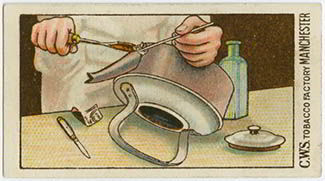 The tools used were an old soldering iron like in the picture, a piece of soft solder, and Fluxite. If you don’t have a soldering iron, you could use a piece of metal.
The tools used were an old soldering iron like in the picture, a piece of soft solder, and Fluxite. If you don’t have a soldering iron, you could use a piece of metal.
Clean the hole by scraping it with a knife and an emery cloth. Put Fluxite, and dip the point of the hot iron in the flux. Apply to the solder, a small piece of which should adhere to it; apply this to the hole, which it will instantly cover.
When the hole is too big and can’t be repaired anymore, cut a piece of tin that is slightly larger than the hole, put the solder around it, and adhere it using heat.
38. How to Boil Cracked Eggs
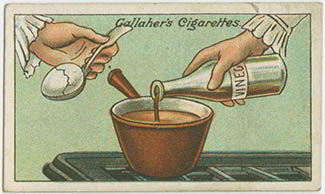 If you want to boil an egg that is already cracked, just add a little vinegar to the water.
If you want to boil an egg that is already cracked, just add a little vinegar to the water.
It’s as simple as that!
When you take it out of the pot, you will notice that none of the contents spilled out.
Related: How to Keeps Eggs Fresh for Months with Mineral Oil
39. How to Adjust a Door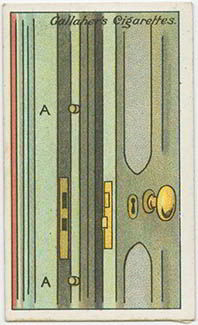
If you have a rattling door, you’ll only need two corks and some glue to fix it.
Glue the corks between the door and the beading of the doorway, exactly as shown in the illustration (A.A).
The corks must be slightly thicker than the crack. The door should be shut until the glue sets. The elasticity of the corks holds the door and stops the rattling noise.
40. How to Mend Broken China
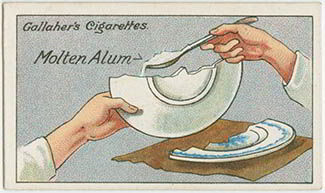 To mend broken china so that the mended article will stand washing in hot or cold water, some common alum should be heated in an old iron spoon until it melts and then applied to the broken pieces.
To mend broken china so that the mended article will stand washing in hot or cold water, some common alum should be heated in an old iron spoon until it melts and then applied to the broken pieces.
The pieces should be retained in position with string and allowed to thoroughly set.
41. 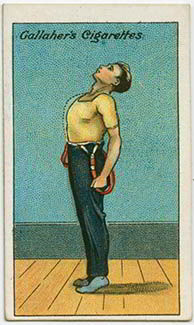 How to Increase Lung Power
How to Increase Lung Power
Stand straight with your head held well back like in the illustration.
Inhale deeply until your lungs are fully inflated, and then gradually exhale.
Repeat this exercise several times in both the morning and evening.
Related: SHTF Antibiotics – A True Story (Video)
42. How to Repair Your Boots
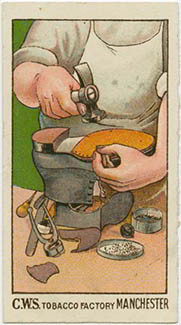 Nowadays we just buy new ones, but 100 years ago, this was a commodity not a lot of people could afford. When SHTF, this is a great skill to have.
Nowadays we just buy new ones, but 100 years ago, this was a commodity not a lot of people could afford. When SHTF, this is a great skill to have.
Instructions: “Start with the heels, remove the top layer, and if the heel is worn down at the back, build it up with small pieces (skived thin at the edge) until you level it.
Nail on a new top piece, and trim it up with a knife and a rasp.
Remove the worn sole, and cut a new sole that is slightly larger. Trim the part that comes under the instep, and fix the sole in position with nails. In the center, drive nails around the sole three-eighths of an inch from the edge at regular distances, not straight but pointing inward.”
Another tip is to soak the leather before starting this project because the leather will expand. After nailing, finish off with a rasp and sand paper, rub with a polishing iron and heelball, and finish the heel in the same way
43. How to Repair a Broken Chair
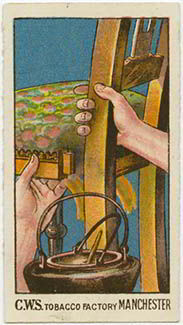 First you have to remove all the upholstery and clean up the tenon and mortise of old glue.
First you have to remove all the upholstery and clean up the tenon and mortise of old glue.
Instructions: “Blind the wedge of the tenon by making a saw cut a quarter of an inch from each corner, and make two small wedges the same depth as the mortise holes and the same width as the tenon. Make sure to taper from one-eighth of an inch to a point, and leave about three-eighths of an inch standing out.”
Apply hot glue to the mortise, to the tenon, and to the shoulder.
Knock them together with a mallet and then hold them together using a loop of cord around the legs, twisting it up with a piece of wood to draw the joint together; then renew the broken webbing and reupholster it.
44. How to Make a Dibbler
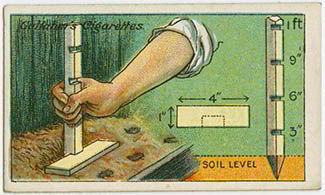 You can use the dibbler to create holes to plant seeds with exact spacing and depth. This simple item can be made from two pieces of wood using a saw or even a knife.
You can use the dibbler to create holes to plant seeds with exact spacing and depth. This simple item can be made from two pieces of wood using a saw or even a knife.
Take a pointed stake, and make holes at different distances. Take a piece of wood that will fit in the grooves, as shown. The dimensions and method are illustrated in the picture.
Related: A Simple Solution to Grow Vegetables Year Round (Video)
45. How to Make a Good Polish
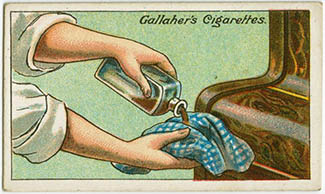 This is a great economical way to make a chemical-free polish for pictures, mirrors, pianos, floors, etc.
This is a great economical way to make a chemical-free polish for pictures, mirrors, pianos, floors, etc.
Mix equal parts vinegar and paraffin in a bottle. You can store this for a long time, so there is no need to make it every time. Just put a cork on it, and keep it in your pantry.
Add a few drops of lavender oil to give it a pleasant smell, and this will also help to keep the flies away.
Check out the first part of this article, “24 Lost Survival Tips from 100 Years Ago—with Illustrations.”
You may also like:
 You Will Not Survive an EMP Strike Without This
You Will Not Survive an EMP Strike Without This
This Bug Will Kill Most of the Americans during the Next Crisis (Video)
How To Make a Mini Root Cellar In Your Backyard In Less Than Two Hours

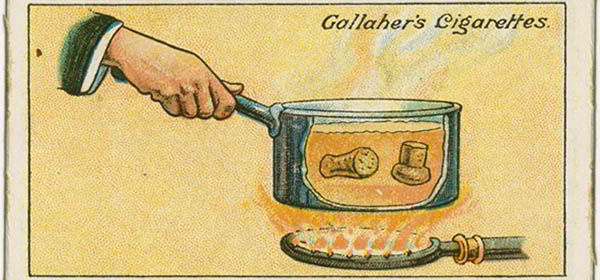













Thanks for the link!
Thanks for these. They’re really great to read and gain from them! niio